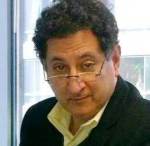Updated
Business Blog: Update on Clean Energy Projects in Morocco – Jean R. AbiNader
Jean R. AbiNader, MATIC
October 10, 2017
As part of the country’s national energy strategy, Morocco has initiated several high profile solar powered desalination projects and is meeting its targets for installing renewable energy in place of expensive oil and gas imports. Its clean energy strategy is diversified, drawing on solar, wind, and hydroelectric projects to make the goal of 52% of the national energy needs by 2030 within sight.
Details are offered on the Solar-Desalination project announced in June. It is a BOT (Build, Operate, Transfer) contract between Abengoa, a Spanish multinational financed jointly with the InfraMaroc investment fund. Since Morocco is one of the top 30 countries worldwide threatened by climate change, it cannot take its water resources for granted. The project, located in the southern Agadir region, will use solar power for desalination and irrigation and have a production capacity of 275,000 cubic meters (m3) of desalinated water per day, with an eventual capacity of 450,000 m3.
According to the latest report from the Oxford Business Group (OBG), “The plant will initially serve two clients, with 150,000 m3 allocated to the National Office of Electricity and Water Supply (ONEE), and 125,000 m3 going to the Ministry of Agriculture, Sea Fisheries, and Rural Development, to be used for irrigating 13,600 hectares of land. It is anticipated that with the necessary distribution infrastructure the plant will supply more than 2.3 million people with drinking water by 2030, 20% living in rural areas.” Abengoa will operate and maintain the plant for 27 years.
The energy-intensive facility will be entirely powered by the 580-MW Noor solar complex in Ouarzazate, located some 250 miles east of Agadir. This will be the second project of its kind in the Kingdom; the Aquasolar project, powered by photovoltaic (PV) and solar technology, has a capacity of 120,000 m3 a day. It was financed by Morocco’s Research Institute for Solar Energy and New Energies, and developed by the Universities of Moulay Ismail and Hassan II, along with Moroccan firm LSA Industrie and Spain’s Plataforma Solar de Almería.
Desalination capacity is on the rise, according to the OBG report: “The new plants are part of a growing number of desalination plants in the country. Other recent developments [using different technology] include two new seawater reverse osmosis plants, which came on-line in January in Boujdour, southern Morocco. The projects – conducted as public-private partnerships between ONEE and Saudi firm Abunayyan Holding subsidiary Wetico – produce 7000 m3 of drinking water per day.”
The government realizes the critical impact of the water supply — on the overall economy and the livelihoods of 35-40% of the workforce. In 2015, annual GDP growth decreased from 3% to 1.5% due to inadequate rainfall for agriculture, and it recovered to more than 4.3% in 2016 due to sufficient rain. “Thus, the desalination projects have become central to the government’s sustainability policies in recent years, as the depletion of water resources jeopardizes future water security,” according to the OBG report.
“In the last 30 years water supplies in Morocco have fallen by 15-30%, according to figures from ONEE. They are expected to drop even further by 10-15% in the run-up to 2020, due to rising demand and shorter supply. In 1960 rainfall amounted to 3500 m3 per inhabitant per year. In 2000 that figure was down to 1000 m3 and is now projected to decline to 490 m3 by 2020.”
Another alternative being used to secure a stable water supply is an innovative wastewater treatment plant in Laayoune to process 40% of southern Morocco’s wastewater for reuse in irrigation. The project falls under the country’s National Water Strategy, a $2.8 billion program that the government hopes will result in 140 wastewater treatment plants by 2020 and improve water yields by up to 96%.
In related energy news, the government has earmarked some $240 million specifically for solar power projects to support the agricultural sector. The strategy involves promoting the use of solar energy to power water pumps for irrigation in order to expand access to agricultural water to 100,000 hectares of new land by 2021. Importantly, it will likely reduce the consumption of butane gas in farming operations, helping achieve the country’s clean energy goals.
The OBG report notes that “In 2009 Morocco generated just 1.7% of its electricity from renewables, but by last year this had risen to 34%,” well on its way to changing the energy power equation in the Kingdom. “The case for renewables in Morocco is compelling, given high solar irradiation and rising demand. The kingdom is among the sunniest countries in the world, with around 3000 hours of sunshine per year.”
Although solar power grabs the headlines, wind power is slated to provide the second largest share of renewable energy. Africa’s largest wind farm is located on the Atlantic Coast at Tarfaya in the south of Morocco, with an installed capacity of 300 MW, generating power for 1.5 million homes. While Morocco’s energy, agriculture, and water projects are ambitious, the King and government see them as critical to maintaining a viable economy and quality of life for Moroccans.
